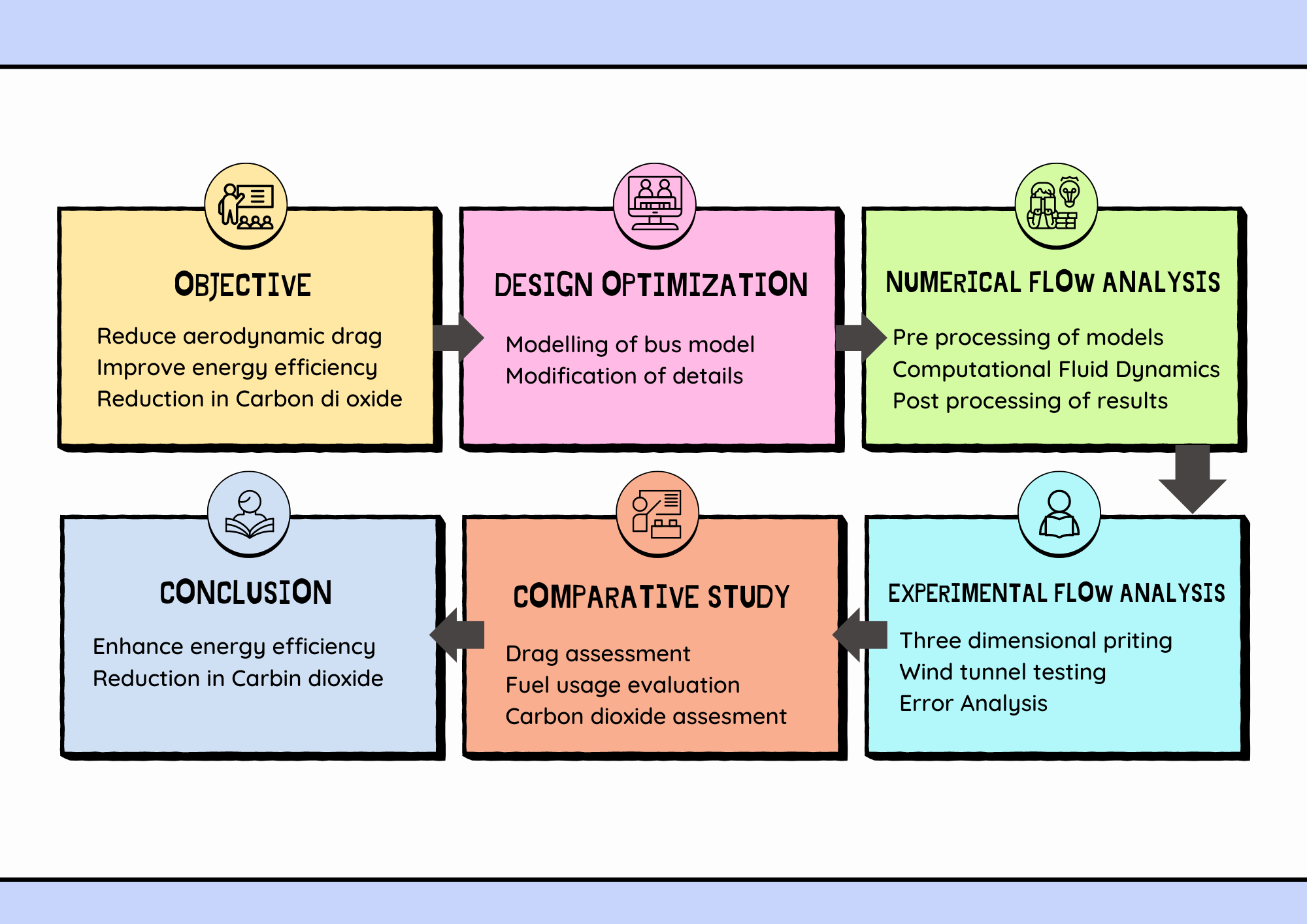
Exhaustion of fossil fuel resources, inconsistent fuel costs and the difficulty of adopting electric vehicle technology in commercial vehicles support the idea that there is an opportunity for research in public transit regarding the correlation between energy efficiency and aerodynamic drag. The turbulent external airflow over a bus at high speeds impacts acceleration, speed, and fuel economy. The fundamental bus's design is intended to carry enough passengers for a reasonable run. Envisaging the factors influencing aerodynamic drag is defiant due to the convoluted relationship between the moving bus and the air. Consequently, a comprehensive numerical and experimental exploration is executed on the bodywork of a bus to improve its aerodynamic efficiency. The aerodynamic drag is directly proportional to the variations in the air density, frontal area, freestream velocity and the drag coefficient. Minimal design reforms are performed on a distinctive long-haul bus. The exertion aims to minimize the drag coefficient, thereby improving the flow characteristics of the bus's bodywork. Through the shape optimization of the bus's bodywork, the modified design has attained a forty-five percent reduction in the drag coefficient. This substantial reduction in drag coefficient directly impacts the reduction of drag force, energy efficiency improvement, and carbon emissions reduction.
Total file downloads: 23